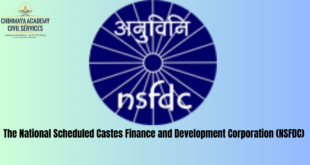- The recent case of allegations of sexual harassment that some of India’s sportswomen (wrestling) are said to have faced have shocked us.
- Those affected had to sit in protest in the capital to make themselves heard. This shows that any internal complaints committee (if there is one) does not function. Or, the wrestlers were not aware about it.
- The Vishaka guidelines on reporting harassment are meant to be followed by government and private institutions equally.
- In view of the sensitivity of the issue, the Union Sports Minister constituted an ‘oversight committee’ headed by a lady Olympic medal holder to investigate the charges levelled against the president of the Wrestling Federation of India.
- Earlier, in February 2021, a leading woman journalist celebrated her victory — not because the accused person who has harassed her sexually was convicted, but because she was acquitted of accusations of defamation that have been levelled against her by the accused.
- The ‘truth’ of victimisation prevailed and it was held that a woman cannot be punished for raising her voice against abuse.
- Though a specific offence relating to ‘sexual harassment’ (under Section 354-A) was inserted in the Indian Penal Code (IPC) in 2013, the allegations largely fell under Section 509 (i.e., to insult the modesty of a woman) of the IPC.
- The victim chose not to report the matter to the police, and there was no internal mechanism in place for the redress of complaints of sexual harassment as the Vishaka guidelines were framed by the Supreme Court of India in 1997. But this did not give the employer any liberty to violate the fundamental rights of a woman at the workplace.
Structural violence, data on workforce
- Violence, in the form of sexual harassment at the workplace, is both direct and structural.
- While an enabling environment for reporting direct violence has shown a gradual improvement, indirect violence remains poorly addressed because it is embedded deep in our social and economic structures.
- It is more visible in the employment imbalance prevalent between men and women, in the organised and unorganised sectors.
- With more men at the workplace, they feel entitled and empowered to take undue advantage of the historical fact that the society is still patriarchal and women are not only in a minority but also occupy a few of the higher positions.
- The numbers matter when it comes to power emanating from the majority. One musters courage to voice one’s grievance when there are sufficient numbers in support of the affected person.
- Also, much would depend on the tooth-to-tail ratio of any organisation. When the number of women in leadership positions are not enough to generate confidence in subordinates, women in lower positions feel reluctant to air their grievances.
- The Periodic Labour Force Survey (PLFS) annual report available for 2020-21 shows that though the participation of women in the total labour force grew, i.e., Labour Force Participation Rate (LFPR) has gradually increased from 17.5% in 2017-18 to 25.1% in 2020-21, and the Worker Population Ratio (WPR) from 16.5% in 2017-18 to 24.2% in 2020-21, it is still much less when compared to men.
- The LFPR and WPR data published in the latest Quarterly Bulletin (April-June 2022) are not encouraging either.
- While LFPR is defined as the percentage of persons in the labour force among the persons in population (i.e., both employed and unemployed or seeking employment), WPR is the percentage of persons employed among the persons in population.
Start early, and at home
- The absence of an enabling and safe working environment is one of the factors for the poor participation of women in the labour force.
- It is generally believed that most women do not complain of sexual harassment and the current redress mechanism is either non-existent or ineffective.
- They are more vulnerable to exploitation by their employer as they can be easily threatened with their job continuity for indecent favours.
- Unless the mindset of treating men and women as equals is developed at an early stage of character formation during childhood, the stereotyped power relation between the two would be difficult to change later.
- It would not be out of context to mention here a theory of criminology known as ‘nature versus nurture’. It says that both genetics and the environment affect an individual’s development.
- While genes may decide certain features of one’s personality at birth, it is social conditioning and the environment of the family and early schooling which matter the most during the growth of children.
- Unless both parents respect each other and treat their girl and boy child on a par in all respects, they grow up learning this inequality as a normal phenomenon, which may even lead to the development of criminal tendencies in men. Therefore, the beginning has to be made at home.
Fixing goals
- Similarly, providing a safe work environment is the responsibility of the employer. The employer needs to ensure that the working environment is safe and women friendly.
- However, it has been observed that whenever allegations of sexual harassment are levelled against superior authorities, instead of getting the complaint inquired into expeditiously under the law, i.e., the Sexual Harassment of Women at Workplace (Prevention, Prohibition and Redressal), Act, 2013, the accused either resorts to multiple attempts at litigation to stall the due process or attempts to bring disrepute to the victim on flimsy grounds.
- The situation becomes more complex when the accused himself is at the helm of affairs, as in the examples given above.
- Therefore, it is essential to fix goals to improve the workplace environment for women.
- The short-term goals may include providing the requisite women-friendly infrastructure, the constitution of internal complaint committees, and the spreading of awareness about the law and procedure of grievance redress.
- Medium-term goals may include the increase of female participation in the labour force, improvement of tooth-to-tail ratio, and providing incentives to prevent drop-outs such as paid maternity leave.
- However, in the long-run, it is essential to address the deep-rooted structural and cultural violence which puts women in a disadvantageous position.
- Unless society as a whole works incessantly to bring about the required changes in the existing socio-cultural and economic structures to eliminate indirect violence, root and branch, the status quo may not change.
SOURCE: THE HINDU, THE ECONOMIC TIMES, PIB
 Chinmaya IAS Academy – Current Affairs Chinmaya IAS Academy – Current Affairs
Chinmaya IAS Academy – Current Affairs Chinmaya IAS Academy – Current Affairs



